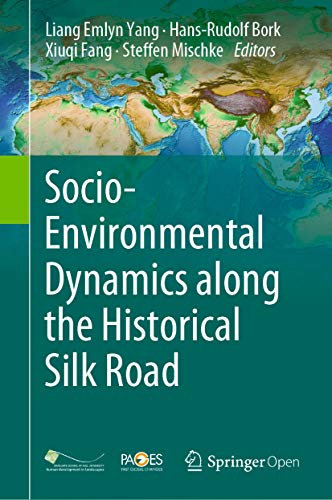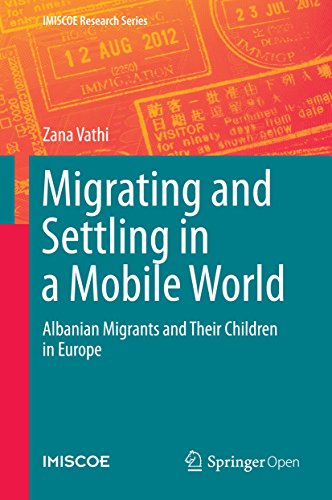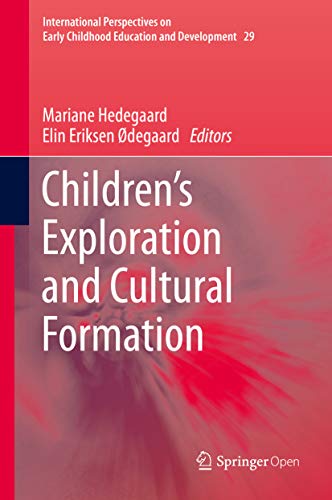-
Illustrated Pollen Terminology
Heidemarie Halbritter, Silvia Ulrich, Friðgeir Grímsson, Martina Weber, Reinhard Zetter, Michael Hesse, Ralf Buchner, Matthias Svojtka, Andrea Frosch-Radivo
eBook (Springer, Oct. 10, 2018)This open access book offers a fully illustrated compendium of glossary terms and basic principles in the field of palynology, making it an indispensable tool for all palynologists. It is a revised and extended edition of “Pollen Terminology. An illustrated handbook,” published in 2009. This second edition, titled “Illustrated Pollen Terminology” shares additional insights into new and stunning aspects of palynology. In this context, the general chapters have been critically revised, expanded and restructured. The chapter “Misinterpretations in Palynology” has been extended with new research data and additional ambiguous terms, e.g., polyads vs. massulae; the chapter “Methods in Palynology” has been extensively enhanced with illustrated protocols showing the majority of the methods and techniques used when studying recent and fossil pollen with LM, SEM and TEM. Moreover, additional information about the description and publication of pollen data is provided in the chapter “How to Describe and Illustrate Pollen Grains.” Various other parts of the general chapters have now been updated and/or extended with more comprehensive textual passages and new illustrations. The chapter “Illustrated Pollen Terms” now features new and more appropriate examples of each term, including additional LM micrographs. Where necessary, the entries for selected pollen terms have been refined by rewording or adding definitions, illustrations, and new micrographs. Lastly, new terms are included, such as “suprasculpture” and the prefix “nano-“ for ornamentation features.The chapter “Illustrated Pollen Terms” is the main part of this book and comprises more than 300 widely used terms illustrated with over 1,000 high-quality images. It provides a detailed survey of the manifold ornamentation and structures of pollen, and offers essential insights into their stunning beauty.
-
Socio-Environmental Dynamics along the Historical Silk Road
Liang Emlyn Yang, Hans-Rudolf Bork, Xiuqi Fang, Steffen Mischke
eBook (Springer, Feb. 27, 2019)This open access book discusses socio-environmental interactions in the middle to late Holocene, covering specific areas along the ancient Silk Road regions. Over twenty chapters provide insight into this topic from various disciplinary angles and perspectives, ranging from archaeology, paleoclimatology, antiquity, historical geography, agriculture, carving art and literacy. The Silk Road is a modern concept for an ancient network of trade routes that for centuries facilitated and intensified processes of cultural interaction and goods exchange between West China, Central Asia, the Middle East, and the Mediterranean. Coherent patterns and synchronous events in history suggest possible links between social upheaval, resource utilization and climate or environment forces along the Silk Road and in a broader area. Post-graduates in studying will benefit from this work, as well as it will stimulate young researchers to further explore the role played by the environment in long-term socio-cultural changes.
-
Migrating and Settling in a Mobile World: Albanian Migrants and Their Children in Europe
Zana Vathi
language (Springer, May 18, 2015)This open access book draws on award-winning cross-generational research comparing the complex and life-changing processes of settlement among Albanian migrants and their adolescent children in three European cities: London (UK), Thessaloniki (Greece), and Florence (Italy). Building on key concepts from the social sciences and migration studies, such as identity, integration and transnationalism, the author links these with emerging theoretical notions, such as mobility, translocality and cosmopolitanism. Ethnic identities, transnational ties and integration pathways of the youngsters and adults are compared, focusing on intergenerational transmission in particular and recognizing mobility as an inherent characteristic of contemporary lives. Departing from the traditional focus on the adult children of settled migrants and the main immigration countries of continental North-Western Europe, this study centres on Southern Europe and Great Britain and a very recently settled immigrant group. The result is an illuminating early look at a second generation “in-the-making”. Indeed, the findings provide ample grounds for pragmatic and forward-looking policy to enable these migrant-origin youngsters, and others like them, to more fully attain their potential. The book ends with a call to reassess the term “second generation” as it is currently used in policy and scholarly works. Children of migrants seldom see themselves as a particular and homogeneous group with ethnicity as an intrinsic identifying quality. More importantly, they make use of all the limited resources at their disposal, and view their integration processes through broader geographies – showing sometimes a cosmopolitan orientation, but also using localized reference points, such as the school, city, or urban neighbourhood.
-
Children's Exploration and Cultural Formation
Mariane Hedegaard, Elin Eriksen Ødegaard
language (Springer, Feb. 28, 2020)This open access book examines the educational conditions that support cultures of exploration in kindergartens. It conceptualises cultures of exploration, whether those cultures are created through children’s own engagement or are demanded of them through undertaking specific tasks within different institutional settings. It shows how the conditions for children’s exploration form a web of activities in different settings with social relationships, local landscapes and artefacts. The book builds on the understanding of cultural traditions as deeply implicated in the developmental processes, meaning that local considerations must be reflected in education for sustainable futures. Therefore the book examines and conceptualises exploration and cultural formation through locally situated cases and navigates toward global educational concepts. The book provides different windows into how children may explore in everyday practice settings in kindergarten, and contributes to a loci-based, ecological, integral knowledge relevant for early childhood education.
-
Nordic Mediation Research
Anna Nylund, Kaijus Ervasti, Lin Adrian
language (Springer, April 3, 2018)This open access book presents twelve unique studies on mediation from researchers in Denmark, Finland, Norway and Sweden, respectively. Each study highlights important aspects of mediation, including the role of children in family mediation, the evolution and ambivalent application of restorative justice in the Nordic countries, the confusion of roles in court-connected mediation, and the challenges in dispute systems. Over the past 20-30 years, mediation has gained in popularity in many countries around the world and is often heralded as a suitable and cost-effective mode of conflict resolution. However, as the studies in this volumes show, mediation also has a number of potential drawbacks. Parties’ self-determination may be jeopardized, affected third parties are involved in an inadequate way, and the legal regulations may be flawed. The publication can inspire research, help professionals and policymakers in the field and be used as a textbook.
-
Teaching Tolerance in a Globalized World
Andrés Sandoval-Hernández, Maria Magdalena Isac, Daniel Miranda
eBook (Springer, April 23, 2018)This open access thematic report identifies factors and conditions that can help schools and education systems promote tolerance in a globalized world. The IEA’s International Civic and Citizenship Study (ICCS) is a comparative research program designed to investigate the ways in which young people are prepared to undertake their roles as citizens, and provides a wealth of data permitting not only comparison between countries but also comparisons between schools within countries, and students within countries. Advanced analytical methods provide insights into relationships between students’ attitudes towards cultural diversity and the characteristics of the students themselves, their families, their teachers and school principals. The rich diversity of educational and cultural contexts in the 38 countries who participated in ICCS 2009 are also acknowledged and addressed. Readers interested in civic education and adolescents’ attitudes towards cultural diversity will find the theoretical perspectives explored engaging. For readers interested in methodology, the advanced analytical methods employed present textbook examples of how to address cross-cultural comparability of measurement instruments and multilevel data structures in international large-scale assessments (ILSA). Meanwhile, those interested in educational policy should find the identification and comparison of malleable factors across education systems that contribute to positive student attitudes towards cultural diversity a useful and thought-provoking resource.
-
Applied Predictive Modeling
Max Kuhn, Kjell Johnson
Hardcover (Springer, March 30, 2018)Winner of the 2014 Technometrics Ziegel Prize for Outstanding BookApplied Predictive Modeling covers the overall predictive modeling process, beginning with the crucial steps of data preprocessing, data splitting and foundations of model tuning. The text then provides intuitive explanations of numerous common and modern regression and classification techniques, always with an emphasis on illustrating and solving real data problems. Addressing practical concerns extends beyond model fitting to topics such as handling class imbalance, selecting predictors, and pinpointing causes of poor model performance―all of which are problems that occur frequently in practice. The text illustrates all parts of the modeling process through many hands-on, real-life examples. And every chapter contains extensive R code for each step of the process. The data sets and corresponding code are available in the book's companion AppliedPredictiveModeling R package, which is freely available on the CRAN archive. This multi-purpose text can be used as an introduction to predictive models and the overall modeling process, a practitioner's reference handbook, or as a text for advanced undergraduate or graduate level predictive modeling courses. To that end, each chapter contains problem sets to help solidify the covered concepts and uses data available in the book's R package. Readers and students interested in implementing the methods should have some basic knowledge of R. And a handful of the more advanced topics require some mathematical knowledge.
-
Rare Earth: Why Complex Life is Uncommon in the Universe
Peter D. Ward, Donald Brownlee
Paperback (Springer, Dec. 10, 2003)What determines whether complex life will arise on a planet, or even any life at all? Questions such as these are investigated in this groundbreaking book. In doing so, the authors synthesize information from astronomy, biology, and paleontology, and apply it to what we know about the rise of life on Earth and to what could possibly happen elsewhere in the universe. Everyone who has been thrilled by the recent discoveries of extrasolar planets and the indications of life on Mars and the Jovian moon Europa will be fascinated by Rare Earth, and its implications for those who look to the heavens for companionship.
-
The Buzz about Bees: Biology of a Superorganism
Jürgen Tautz, Helga R. Heilmann, David C. Sandeman
Hardcover (Springer, May 20, 2009)Tis book, already translated into ten languages, may at frst sight appear to be just about honeybees and their biology. It c- tains, however, a number of deeper messages related to some of the most basic and important principles of modern biology. Te bees are merely the actors that take us into the realm of phys- ology, genetics, reproduction, biophysics and learning, and that introduce us to the principles of natural selection underlying the evolution of simple to complex life forms. Te book destroys the cute notion of bees as anthropomorphic icons of busy self-sacr -i fcing individuals and presents us with the reality of the colony as an integrated and independent being―a “superorganism”―with its own, almost eerie, emergent group intelligence. We are s- prised to learn that no single bee, from queen through drone to sterile worker, has the oversight or control over the colony. - stead, through a network of integrated control systems and fee- backs, and communication between individuals, the colony - rives at consensus decisions from the bottom up through a type of “swarm intelligence”. Indeed, there are remarkable parallels between the functional organization of a swarming honeybee colony and vertebrate brains.
-
Physics from Symmetry
Jakob Schwichtenberg
Hardcover (Springer, Dec. 2, 2017)This is a textbook that derives the fundamental theories of physics from symmetry. It starts by introducing, in a completely self-contained way, all mathematical tools needed to use symmetry ideas in physics. Thereafter, these tools are put into action and by using symmetry constraints, the fundamental equations of Quantum Mechanics, Quantum Field Theory, Electromagnetism, and Classical Mechanics are derived. As a result, the reader is able to understand the basic assumptions behind, and the connections between the modern theories of physics. The book concludes with first applications of the previously derived equations. Thanks to the input of readers from around the world, this second edition has been purged of typographical errors and also contains several revised sections with improved explanations.
-
Handbook of Print Media
Helmut Kipphan
Hardcover (Springer, Sept. 21, 2001)Printers nowadays are having to learn new technologies if they are to remain competitive. This innovative, practical manual is specifically designed to cater to these training demands. Written by an expert in the field, the Handbook is unique in covering the entire spectrum of modern print media production. Despite its comprehensive treatment, it remains an easy-to-use, single-volume reference, with all the information clearly structured and readily retrievable. The author covers both traditional as well as computer-aided technologies in all stages of production, as well as electronic media and multimedia. He also deals with training, research, strategies and trends, showing readers how to implement the latest methods. With 1,200 pages, containing 1,500 illustrations - over half in colour - the Handbook conveys the current state of technology together with its specific terminology. The accompanying CD-ROM includes the entire manual in fully searchable form, plus additional software tools. Invaluable information for both beginners and "old hands" in printing works, publishing houses, trade associations, the graphics industry, and their suppliers.
-
Aesthetic Procedures: Nurse Practitioner's Guide to Cosmetic Dermatology
Beth Haney
Paperback (Springer, Sept. 21, 2019)This book is a resource that offers guidance to nurses who are experienced or novice aesthetic practitioners and would like to improve their aesthetic practice and enhance patient safety and satisfaction. This textbook reviews skin structure and anatomy, what happens as facial structures age, the effects of aging coupled with environmental exposures, pharmacology of medications used in aesthetics, light-based device properties, patient selection, and benefits of treatments. In addition, it includes suggestions on how to communicate with patients to achieve successful outcomes. Aesthetic Procedures: Nurse Practitioner's Guide to Cosmetic Dermatology provides practitioners a one-source resource to attain more in-depth learning about cosmetic dermatology. Although there are several texts on individual aspects of aesthetic medicine, there is no all-inclusive book for nurses. This book affords the primary care practitioner the opportunity to add minimally invasive cosmetic dermatology procedures to their practice and perform the treatments safely, efficiently and effectively while avoiding common mistakes and minimizing complication risks. Education is paramount in creating a safe patient environment and as more clinicians turn to aesthetics to augment their practice, this book will be a valuable resource for nurses and practitioners all over the world.